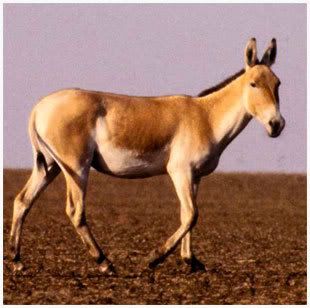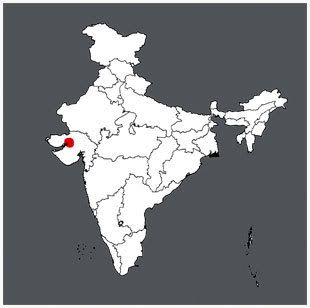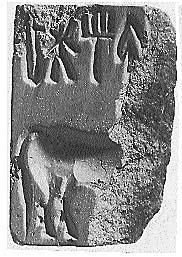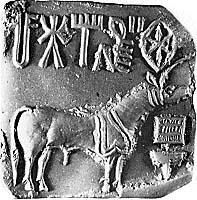


Notice: This is the official website of the All Empires History Community (Reg. 10 Feb 2002)
Why i am wrong about the Aryan Invasion |
Post Reply 
|
Page <12345 7> |
| Author | |||||
bilal_ali_2000 
Baron 
Joined: 03-Jul-2007 Online Status: Offline Posts: 409 |
 Quote Quote  Reply Reply
 Topic: Why i am wrong about the Aryan Invasion Topic: Why i am wrong about the Aryan InvasionPosted: 08-Dec-2007 at 13:48 |
||||
My point remains how many. Less than even 2%. And most of it is along the coastal areas of Gujrat, Sindh and Marathi where the Dravidians being master sailors they were contacted the local populations. Compare that with more than 70 % of all the old place names in America being of Native American source. Edited by bilal_ali_2000 - 08-Dec-2007 at 15:24 |
|||||
 |
|||||
bilal_ali_2000 
Baron 
Joined: 03-Jul-2007 Online Status: Offline Posts: 409 |
 Quote Quote  Reply Reply
 Posted: 08-Dec-2007 at 19:03 Posted: 08-Dec-2007 at 19:03 |
||||
Please tell me what are those. Almost all the purely native flaura and fauna has IE etymologies. mayUra-peacock vyAghra-tiger mahiSa-buffalo monkey- kapi elephant-ibha, hastin, vAraNa, gaja, prshati- spotted deer Edited by bilal_ali_2000 - 08-Dec-2007 at 19:04 |
|||||
 |
|||||
jdalton 
Pretorian 
Joined: 02-Aug-2007 Location: Canada Online Status: Offline Posts: 166 |
 Quote Quote  Reply Reply
 Posted: 08-Dec-2007 at 20:47 Posted: 08-Dec-2007 at 20:47 |
||||
|
I can't believe I'm wading into this, but...
This is a very good point and arguments of this kind have modified my views on Indian history. There are many ways a language can spread. Here are the ones I can think of, at least: 1.) Invasion and replacement of an existing population. Think the prevalence of English in North America. But if there's no evidence of a massive invasion into India, we can't really assume this happened. Especially considering the IAs were nomadic herders and the existing population were farmers living in one of the most fertile places in the world. I'm sure the IAs would have been vastly outnumbered! 2.) Invasion and conquest, the new language is imposed on the subjugated population. Think Spanish in South America. But without large powerful governments and armies to impose this language I don't know if the IAs could have done it. 3.) A language spreads along with a religion. Look at how popular Arabic is in North Africa. It took a small core of Arabic-speaking Muslims to spread their language across the region, but it has completely replaced Egyptian and Berber and Carthaginian because the existing population all switched to the new language when they switched religions. Here's my current favourite as regards the topic in question: 4.) A newly introduced language becomes a Lingua Franca when trade and travel suddenly become more common. Swahili is indigenous to a small part of the east coast of Africa. It spread all up and down that coast with the people as they travelled and traded and settled. But now it is becoming common in parts of Africa the Swahili themselves never reached. I've met people from Congo who speak it fluently. Why would this happen? Because Africa has hundreds and hundreds of small local languages and as soon as you leave your village you need a new way to communicate. And in the last few centuries Africans have been traveling around a whole lot more. Does anyone know how linguistically diverse the Sub-continent was before the assumed arrival date of the Indo-Aryans? If a smallish group of them arrived, were nomadic, and also introduced the horse, could their single unified language have suddenly seemed very useful to the native Indians when they traveled between regions? |
|||||
|
Lords of Death and Life (a Mesoamerican webcomic)
|
|||||
 |
|||||
bilal_ali_2000 
Baron 
Joined: 03-Jul-2007 Online Status: Offline Posts: 409 |
 Quote Quote  Reply Reply
 Posted: 09-Dec-2007 at 17:02 Posted: 09-Dec-2007 at 17:02 |
||||
That is why most people now use the term migration instead of invasion even though it is still pretty much an invasion. Not only were they living in the world's most fertile place but it also was the world's most extensive fertile expanse. The fertile expanse was much larger than it is today because the largest river to flow in this region flowed from north to south. When the thar desert and balochistan was lush green.
Again that would require large scale invasion of which there is no evidence.
That was followed by a noricable changr in the culture of that region. Of which there is no evidence here. The Indus Valley gradually and smoothly gave way to localized cultures.
Why would the Indus Valley people trade with the Aryans if the Aryans were if what they are made out to be by the AIT theory. They had everything that they could possibly want right in their midst. Metallic Ores, precious metals (this region was the only supplier of diamonds in the world as late as 1850), extensive fertile plains whose production must have been many times the combined output of Sumer and Egypt. Their trade with Sumer seems to have been only one way with nothing that was produced in Sumer being found in the Indus Valley, so the question arises that what possibly could the Aryans have which the Indus people wanted so that the Aryans could trade with them. Nomads cannot produce anything which the settled societies want because the act of production requires exploiting the natural sources something which nomads because of their constant moving cannot do.
As has already been pointed out that the introduction of horse in China, Egypt and Sumer wasn't accompanied by a complete change in their societies. Why should the Indus Valley be any different.
And secondly Indus Valley Civilization was as unified as any political entity can be in those times. At its most extreme the expanse of this civilization was 2.5 million square kilometer. And in all of this vast area there is no sign of any warfare, the same building standards were followed everyhwere, the same script was used everywhere. They certainly were not in need of the tribal aryans to show them the virtues of unity.
And about language diversity. When even that is not known that what language they spoke how can anybody decide about linguistic diversity of that time.
Edited by bilal_ali_2000 - 09-Dec-2007 at 19:45 |
|||||
 |
|||||
bilal_ali_2000 
Baron 
Joined: 03-Jul-2007 Online Status: Offline Posts: 409 |
 Quote Quote  Reply Reply
 Posted: 09-Dec-2007 at 19:35 Posted: 09-Dec-2007 at 19:35 |
||||
I am giving arguments that why i believe in something. What else should i do, say that OIt is true and whoever does not believe in it "is a fool" or in the case of pro-AIT people including you "is poltically motivated"
Edited by bilal_ali_2000 - 09-Dec-2007 at 19:35 |
|||||
 |
|||||
bilal_ali_2000 
Baron 
Joined: 03-Jul-2007 Online Status: Offline Posts: 409 |
 Quote Quote  Reply Reply
 Posted: 09-Dec-2007 at 19:42 Posted: 09-Dec-2007 at 19:42 |
||||
Errr, this is a discussion thread isn't it. My point in starting this thread was to discuss the available evidence and decide for ourselves about AIT or AMT or OIT. What will be the point of this thread if we just accepted the commonly held view. There was afterall a time when most people thought that the earth was falt.
Edited by bilal_ali_2000 - 09-Dec-2007 at 19:42 |
|||||
 |
|||||
Sander 
AE Moderator 
Joined: 20-Mar-2007 Location: Netherlands Online Status: Offline Posts: 597 |
 Quote Quote  Reply Reply
 Posted: 11-Dec-2007 at 01:38 Posted: 11-Dec-2007 at 01:38 |
||||
|
MayUra (peacock ) for example is Non IA, just as lANgala ( plough ) and vrIhi ( rice ). Anyway, for details on the non IA words in rigveda and IA , check F. B. J. Kuiper (Aryans in the Rigveda, 1991 ) or F. Southworth.
Much better to rely on specialists instead of dubious people like Koenraad Elst ( as you admitt you get much info from him ) , David Frawley ( a yoga teacher calling himself guru Vamadeva shastri ) Rajaram ( ' I see a horse ! '), Jha, Talageri, Oak ( " Taj Mahal and Mecca were Hindu !" ) etc etc.
Bilal, you asserted Prakrit was created by the Mauryas. We still see lenghty postings to defend that. Maybe the long reasoning in it works for you but that does not mean that counts for others.
Again, we dont get evidence supporting the OIT, only ad hoc theories and personal reasoning. No sensible person supports those ideas of a 6500 year old rigveda that has things only invented 2500 years later (!). Also, we cannot work with your theorioes of groups that left India in 4500 BC if you cannot even supply the names for them , their language, culture.
we clearly see where thse ideas are coming from : the hindu(tva) orientated sites like Bharatvani , the Hindu net , Voice of Dharma etc. Fortunately you dont make a secret of it but that does not mean that such kind of info is valid for others. Edited by Sander - 12-Dec-2007 at 02:39 |
|||||
 |
|||||
Sander 
AE Moderator 
Joined: 20-Mar-2007 Location: Netherlands Online Status: Offline Posts: 597 |
 Quote Quote  Reply Reply
 Posted: 11-Dec-2007 at 01:57 Posted: 11-Dec-2007 at 01:57 |
||||
exactly. Nobody in west europa gets insecure wether IE homeland is in europe or outside . Prevailing view is southern Russia, but so what? If the evidence shows Africa we will accept this too.
In India , though, people seem to be very much against the idea about the IE migration to that place. And this while for thousands of years wave after wave of people are coming to that place . Edited by Sander - 11-Dec-2007 at 02:09 |
|||||
 |
|||||
Guests 
Guest 
|
 Quote Quote  Reply Reply
 Posted: 11-Dec-2007 at 04:33 Posted: 11-Dec-2007 at 04:33 |
||||
Can you share how many waves of people do think there were who came.
How many migrated, invaded, just lost their way etc...?
Of those who decided to stay, where are they now? Assimilated or maintain seperate identity?
How many came and said 'nah... not for me' and went back?
Lastly, which regions do you count as India, present India? Pakistan also? Afghanistan too?
|
|||||
 |
|||||
bilal_ali_2000 
Baron 
Joined: 03-Jul-2007 Online Status: Offline Posts: 409 |
 Quote Quote  Reply Reply
 Posted: 25-Dec-2007 at 15:23 Posted: 25-Dec-2007 at 15:23 |
||||
|
Ok i don't like to repeat myself but for once for your sake i will do so. I will give my sources for the facts that which i quoted Even supporters of the AIT have admitted that the horse was known in Mohenjo Daro, near the coast of the Arabian Sea (let alone in more northerly areas), in 2500 BC at the latest -Source- E.J.H. Mackay and A.D. Pusalker, quoted in Talageri: Aryan Invasion Theory, a Reappraisal But the presence of horses and even domesticated horses has already been traced further back: horse teeth at Amri, on the Indus near Mohenjo Daro, and at Rana Ghundai on the Panjab-Baluchistan border have been dated to about 3,600 BC -Source- Cited in Harry H. Hicks & Robert N. Anderson: Analysis of an Indo-European Vedic Aryan Head, 4th Millennium BC, Journal of Indo-European Studies, fall 1990, p.425-446, specifically p.437
More bones of the true and domesticated horse have been found in Harappa, Surkotada (all layers including the earliest), Kalibangan, Malvan and Ropar
-Source- S.P. Gupta: The Lost Sarasvati and the Indus Civilization, p. 193-196, with full references Recently, bones which were first taken to belong to onager specimens, have been identified as belonging to the, domesticated horse (Kuntasi, near the Gujarat coast, dated to 2300 BC). Superintending archaeologist Dr. A.M. Chitalwala comments: We may have to ask whether the Aryans () could have been Harappans themselves. () We dont have to believe in the imports theory anymore -Source- Interviewed in: Aryan civilization may become bone of contention, Indian Express, 10/12/1995.
Other cave paintings, so far undated, show a number of warriors wielding sticks in their right hands and actually riding horses without saddles or bridles -Source- Dated to la nuit des temps, the night of time, in Science IllustrÚe, May 1995 http://www.geocities.com/bilal_ali_2000/IndusValleyChessPieces.jpg Here are the Terracotta chess pieces excavated from Lothal from 2500 B.C. You tell me that what does the horse piece among those pieces mean? http://www.geocities.com/ifihhome/images/bbl002/lothalhorse.jpg This horse figurine was excavated from Lothal http://www.geocities.com/bilal_ali_2000/HorseMohenjodaro.jpg This one was excavated from Mohenjodaro I had to go to the trouble of hosting these picture on the web to appease you -Link- http://en.wikipedia.org/wiki/Surkotada -Excerpts- Surkotada is an archeological site located in India. It is famous for horse remains dated to ca. 2000 BCE [1][2 References B?k?nyi, S. Horse Remains from the Prehistoric Site of Surkodata, Kutch, late 3rd Millennium B.C. South Asian, Studies,1997 Meadow, R. H. and Patel, A. A Comment on "Horse Remains from Surkodata" by S?ndor B?k?nyi. South Asian, Studies 13, 1997, 308-318
"Deep in the specialized literature on horse classification, we can find that Indian and other horses extending to insular Southeast Asia were peculiar from other breed. All showed anatomical traces of admixture with the ancient equid known as Equus Sivalensis. ůHowever, like that equid, the horse of southeastern Asia has peculiar zebra-like dentition. Also both were distinguished by a pre-orbital depression. The orbital region is important because it has been demonstrated as useful in classifying different species of equids. Finally, and most importantly in relation to the Vedic literature, the Indian horse has, like Equus Sivalensis, only 17 pairs of ribs." ( P K Manansala). -Source- A. Ghoshĺs respected and authoritative Encyclopaedia of Indian Archaeology mentions In India the ... true horse is reported from the Neolithic levels at Kodekal [dist. Gulbarga of Karnataka] and Hallur [dist. Raichur of Karnataka] and the late Harappa levels at Mohenjo-daro (Sewell and Guha, 1931) and Ropar and at Harappa, Lothal and numerous other sites. ů Recently bones of Equus caballus have also been reported from the proto-Harappa site of Malvan in Gujarat.1 I had given you the exact source which says that the horse with which the Rig Vedic aryans were familiar with was the 17 ribbed horse
In the Rig Veda, Book 1, Hymn CLXII verse 18 Mortimer Wheeler otherwise an invasionist said ôit is likely enough that camel, horse and ass were in fact a familiar feature of the Indus caravan.ö -Source- Mortimer Wheeler, The Indus Civilization (Cambridge: Cambridge University Press, 1953), p. 92, quoted by Edwin Bryant in The Quest for the Origins of Vedic Culture: The Indo-Aryan Migration Debate (New Delhi: Oxford University Press, 2002), pp. 170-171. The well- known archaeologist B. B. Lal refers to a number of horse teeth and bones reported from Kalibangan, Ropar, Malvan and Lothal -Source- B. B. Lal, The Earliest Civilization of South Asia (New Delhi: Aryan Books International, 1997), p. 162. Another senior archaeologist, S. P. Gupta, adds further details on those finds, including early ones -Source- S. P. Gupta, The Indus-Sarasvati Civilization ľ Origins, Problems and Issues (Delhi: Pratibha Prakashan, 1996), pp. 160-161. In the case of Lothal, the archaeozoologist Bhola Nath certified the identification of a tooth -Source- Quoted in S. R. Rao, Lothal ľ A Harappan Port Town (New Delhi: Archaeological Survey of India, 1985), vol. II, pp. 641-642. he also made similar observations regarding bones from Mohenjo-daro and Harappa -Source- For Harappa, see Bhola Nath, ôRemains of the Horse and the Indian Elephant from the Prehistoric Site of Harappa (West Pakistan)ö in Proceedings of the All-India Congress of Zoology (Calcutta: Zoological Society of India, 1961). See also Bhola Nath, ôAdvances in the Study of Prehistoric and Ancient Animal Remains in India ľ A Reviewö in Records of the Zoological Survey of India, LXI.1-2, 1963, pp. 1-64.
A. K. Sharmaĺs identification of horse remains at Surkotada was endorsed by the late Hungarian archaeozoologist Sßndor B÷k÷nyi, an internationally respected authority in the field; in 1991, taking care to distinguish them from those of the local wild ass (khur), he confirmed several of them to be ôremnants of true horses,ö and what is more, domesticated horses
-Source- Sßndor B÷k÷nyi, ôHorse Remains from the Prehistoric Site of Surkotada, Kutch, Late 3rd
In his 1993 report to the Director-General of the Archaeological Survey of India, B÷k÷nyi made no bones about the whole issue: Through a thorough study of the equid remains of the prehistoric settlement of Surkotada, Kutch, excavated under the direction of Dr. J. P. Joshi, I can state the following: The occurrence of true horse (Equus caballus L.) was evidenced by the enamel pattern of the upper and lower cheek and teeth and by the size and form of incisors and phalanges (toe bones). Since no wild horses lived in India in post-Pleistocene times, the domestic nature of the Surkotada horses is undoubtful. This is also supported by an inter- maxilla fragment whose incisor tooth shows clear signs of crib biting, a bad habit only existing among domestic horses which are not extensively used for war -Source- Sßndor B÷k÷nyi, 13 December 1993, in his report to the Director General of the P. K. Thomas, P. P. Joglekar et al., experts from the Deccan College on faunal remains, reported horse bones from the nearby Harappan site of Shikarpur ôin the Mature Harappan period,ö9 and from Kuntasi (at the boundary between Kutch and Saurashtra).
-Source- P. K. Thomas, P. P. Joglekar, et al, ôSubsistence Based on Animals in the Harappan Culture Koldihwa (in the Belan valley of Allahabad district), G. R. Sharma et al. identified horse fossils -Source- G. R. Sharma, History to Prehistory: Archaeology of the Vindhyas and the Ganga Valley Contemporary with the Harappan period, the culture of the Chambal valley (in Madhya Pradesh) was explored by the respected archaeologist M. K. Dhavalikar, with layers dated between 2450 and 2000 BCE. -Source- M. K. Dhavalikar, Indian Protohistory (New Delhi: Books & Books, 1997), p. 115.
Just like at Surkotada, the horse at Kayatha was domesticated
At Surkotada from all the three periods quite a good number of bones of horse (Equus Caballus Linn) ... have been recovered. The parts recovered are very distinctive bones: first, second and third phalanges and few vertebrae fragments -Source- Ibid., p. 381. -Source- The first of Surkotadaĺs ôthree periodsö coincides with the mature stage of the Harappan civilization
-Source- Period IA starts about 2300 BCE (see ibid., p. 60 ff.), but this is based on uncalibrated C-14 we have the case of Mahagara (near Allahabad), where horse bones were not only identified by G. R. Sharma et al., but ôsix sample absolute carbon 14 tests have given dates ranging from 2265 B.C.E. to 1480 B.C.E.ö -Source- Sharma et al., Beginnings of Agriculture (Allahabad: Abinash Prakashan, 1980), pp. 220-
The case of Hallur, mentioned by A. Ghosh above, is even more striking: the excavation (in the late 1960s) brought out horse remains that were dated between 1500 and 1300 BCE, in other words, about the time Aryans are pictured to have galloped down the Khyber pass, some 2,000 north of Hallur -Source- K. R. Alur, ôAnimal Remainsö in Proto-historical Cultures of the Tungabhadra Valley, ed. M. S. Which which of these reports will you deny? And the evidence is bound to pile up as thousands of the Harppans sites are excavated. Edited by bilal_ali_2000 - 25-Dec-2007 at 19:00 |
|||||
 |
|||||
anum 
Knight 
Joined: 14-Dec-2007 Online Status: Offline Posts: 92 |
 Quote Quote  Reply Reply
 Posted: 25-Dec-2007 at 18:12 Posted: 25-Dec-2007 at 18:12 |
||||
|
aryans probably came till modern day kashmir, punjab area. No way they conqured half of india as it is suggested by many indians. There home land was present day Afghanistan/Centeral asia area. |
|||||
 |
|||||
bilal_ali_2000 
Baron 
Joined: 03-Jul-2007 Online Status: Offline Posts: 409 |
 Quote Quote  Reply Reply
 Posted: 25-Dec-2007 at 18:56 Posted: 25-Dec-2007 at 18:56 |
||||
If they didn't conquered North India then please tell me that how is north india aryan today.
As for Aryans originating in Afghanistan, well that is a pretty strange proposition. The harappan realm covered most of what is Afghanistan today. If the Harappans themselves were not Aryans then please tell me that how come is that Afghanistan suddenly became Aryans despite being under the Harappans.
Apart from the Harappans there is very little evidence of any advanced culture able to make the Aryan incursions possible. The two candidates that we have for the homeland of the Aryans now are southern Russia and Anatolia and in both of them have cultures which we can attribute to Aryans, Antolia has many neolithic cultures whereas southern russia has the kurgan culture. Where do we find such a non-harappan culture in Afghanistan.
|
|||||
 |
|||||
anum 
Knight 
Joined: 14-Dec-2007 Online Status: Offline Posts: 92 |
 Quote Quote  Reply Reply
 Posted: 25-Dec-2007 at 19:55 Posted: 25-Dec-2007 at 19:55 |
||||
|
North indian speak aryan languages, that doesnt mean they are aryans. also afghanistan was always connected with central asia, orginally aryans were from central asia region.
|
|||||
 |
|||||
Sander 
AE Moderator 
Joined: 20-Mar-2007 Location: Netherlands Online Status: Offline Posts: 597 |
 Quote Quote  Reply Reply
 Posted: 31-Dec-2007 at 03:19 Posted: 31-Dec-2007 at 03:19 |
||||
|
Edited by Sander - 31-Dec-2007 at 04:18 |
|||||
 |
|||||
Sander 
AE Moderator 
Joined: 20-Mar-2007 Location: Netherlands Online Status: Offline Posts: 597 |
 Quote Quote  Reply Reply
 Posted: 31-Dec-2007 at 03:58 Posted: 31-Dec-2007 at 03:58 |
||||
|
What s new here ? Again a pro- hindutva selected list with many refernces to dubious Indian scholars ( most of the hindutva camp). As checked, much is to be read on the hindutva sites like Bharatvani , Hindu- unity, Voice of Dharma etc .
We even see Talageri ( see earlier postings ) mentioned on Bilals list. Talageri who claimed to have published the most important work on the rigveda ever, revealing all its socalled secrets ( India as imaginary origin of the iranic , greek , germanic, slavic people etc etc )while he cannot even read the vedic text himself and employs 19 th century English translations.
Its also interesting to see indians like Gupta , Kak, Sethna ( and many more) on it who greatly cheered when Rajaram and Jha pulled their horse tricks ( see further below). No coincedence that most of the listed indians (or pro Hindutva non -indians like Frawley , Knapp, Elst , Feuerstein etc ) are always to be read on the hindu sites.
The referring to Indian scholars/institutions has usually little value in these matters (as we shall see). That such Indian scholars on this (not meaning the exceptions) are not taken very seriously in the normal academic circles has nothing to do with prejudice or something, but is the result of their ongoing distortions and bizar India centric claims. In modern India people and institutions are often applauded (especially by the official Hindu nationalist parties) when they come up with distorted info ( and outright nonsense) , as long as the hindutva cause is served. That is also why the " Institute for Rewriting Indian history" , is enthousiastically claiming an Indian background for almost everything on earth.
When the 'indigenist' camp cites western scholars or studies they usually mean little. Often the cited study is invalid or is misused in creative ways by the nationalists for the ' good cause'. Lets give an example of this from Bilal list, that says it all ( done by B. Lal, the director -general of the Archeological Survey of India )
Sandor Bokonyi is mentioned and cited as support for the "indigenous domesticated horse" . Bokonyi is one of the few mentioned on the list that can be taken seriously. Yet, as expected , even here the 'indigenist 'camp is deliberately messing things up. Whatever Bokonyi might have said in 1993 ( in a informal letter to somebody )about a possibility that the domesticated horse might be indigenous, has little weight because in his 1997 scholarly paper he stresses that the domesticated horse is imported from central asia :
" horses reached the Indian subcontinent in an already domesticated form from the Inner Asiatic domestication centres". (Central Asian steppes). (also quoted in "Horseplay in Harappa" , see below).
Now, because the Indian nationalists prefers to say that Bokonyi supports some indigenous domesticated horse, they will cite his 1993 letter instead of his 1997 study where he emphasizes the import! A good example of their more subtle tactics. Sandor Bokonyi thought to have seen some horsebones of slightly earlier than 2000 BC but this had no consensus among specialists . Wether they are 2100 BC or rather 1800 BC is not even relevant since the subsequent scientific research on the bones, by Richard Meadow and Ajita Patel (1997 , "A comment on : Horse remains at Surkotada by Sandor Bokonyi " ) established they belonged to the equus hemionus khur , the onager.
  The onager ( guess where it's habitat and Surkotada are.. Hey, its the same place, Kutch )
It are usually zooarcheologists ( specialized in animal bones from archeological sites) that can distinguish best between the bones, something non specialists cannot. Fortunately, Richard Meadow ( Harvard University ) is already for more than a decade director of the Harappa Archeogical project in Pakistan and the team inclused zooarcheologists ( he himself is as well) No nonsensical 'horseplay ' from them and bona fide studies show that all clearly identified horsebones ( in undisturbed layers etc ) in the subcontinent are from the second millenium BC , the period of Aryan arrival.
As demonstrated, referenes, citations, pictures etc loose value ( if having any) after passing through the Indian Hindutva' channel '. Lets give 2 more examples for fun. As many know, Rajaram was greatly cheered by the Indian nationalists when he and Jha published their book with their totally nonsensical 'decipherment' of the IVC script and their ' discovery' of the IVC horse. Now, in their work there are some ( seemingly normal ) references to IVC seals, europeans scholars etc. Well, lets see how horses are 'produced ' :
  left : seal impression ( derived from Mackay 772 A )
middle and right : rajarams impressions of the seal and behold... the desired horse!
Ofcourse, the reality was different :
  left :front of the original seal ( mackay772 A )Simply a cracked seal
right : Indus seal with the standard unicorn bull
For quick and detailed reading on all this nonsense and more, see the legendary artcile , "Horseplay in Harappa" (M. Witzel and S. Farmer 2000 )
Lets look at another 'horse vision' . Below a pic of a 'horse' presented by Bilal :
 Hard to see what it is actually (several animals, prey and predators, have heavy necks). Its does not even look remotely horse- like , with such skinny hips behind ( not to mention other things).
This is a horse :
 Horse in action
The head of Bilals ' horse' does not seem so striking either. It does not even have ears.
  horses in good mood ( with ears )
Of course, no sensible zoologist etc will ever suggest that Bilal's mammal is a horse, without rightfully fearing to be thrown out of his association with no chance of ever returning.
The above only deals with part of the dubious stuff that has been published here . Bilal has shown many more dubious references , citations and arguments, pics etc, always to be read on the Hindu sites. Occasionaly, some info from there is copied and finds its way to (seemingly) less alarming looking sites but it keeps just as suspect ofcourse. Usually, it can be easily traced back to the Hindutva/Indigenist camp and experience has thought us ( and still does) that it's nearly always distorted stuff to fool others. Edited by Sander - 05-Sep-2008 at 19:47 |
|||||
 |
|||||
Guests 
Guest 
|
 Quote Quote  Reply Reply
 Posted: 31-Dec-2007 at 04:24 Posted: 31-Dec-2007 at 04:24 |
||||
you're confusing the terms aryan and indo-european. regardless of ur preference, the consensus among language experts is that Hittite is the oldest IE language, and anatolia very far from india again, OIT fails to address this. |
|||||
 |
|||||
Guests 
Guest 
|
 Quote Quote  Reply Reply
 Posted: 31-Dec-2007 at 04:34 Posted: 31-Dec-2007 at 04:34 |
||||
where do you get these numbers from? ur implying the dravidian speakers never traveled inland, which is def not the case, considering some postulate dravidian speaking populations once stretched from Elam down to Sri Lanka, with the Brahui remanants presently in baluchistan. Edited by Kabob1122 - 31-Dec-2007 at 06:08 |
|||||
 |
|||||
jdalton 
Pretorian 
Joined: 02-Aug-2007 Location: Canada Online Status: Offline Posts: 166 |
 Quote Quote  Reply Reply
 Posted: 02-Jan-2008 at 00:55 Posted: 02-Jan-2008 at 00:55 |
||||
(Well, Indoeuropean, but anyways) Can we agree on this? Is this possible? The linguistic evidence is the evidence I know the best, and the linguistic evidence seems pretty conclusive. By which I mean, the linguistic evidence strongly suggests the people of Northern India speak languages that originated in Central Asia. If we can agree that A.) some group, however small or large, must have traveled from Central Asia to the Subcontinent and transmitted their language, and B.) that IE-speaking and Dravidian-speaking South Asians cannot be distinguished today apart from their language, It would seem to me to be a much more fruitful debate to ask "what was the nature of the so-called 'Aryan invasion.'" Was it an invasion at all? When did it happen? How long did it take? Was it a large group of people or a small group of people? What happened to these Aryans? Did they have any impact on the Subcontinent apart from language? That sort of thing. |
|||||
|
Lords of Death and Life (a Mesoamerican webcomic)
|
|||||
 |
|||||
anum 
Knight 
Joined: 14-Dec-2007 Online Status: Offline Posts: 92 |
 Quote Quote  Reply Reply
 Posted: 02-Jan-2008 at 01:33 Posted: 02-Jan-2008 at 01:33 |
||||
|
hi guys this is really interesting article and it clearly tells majority of indians have indian genetics not outsiders http://news.nationalgeographic.com/news/2006/01/0110_060110_india_genes.html
|
|||||
 |
|||||
bilal_ali_2000 
Baron 
Joined: 03-Jul-2007 Online Status: Offline Posts: 409 |
 Quote Quote  Reply Reply
 Posted: 03-Jan-2008 at 16:59 Posted: 03-Jan-2008 at 16:59 |
||||
The only reason that Hittite is being considered as the oldest of IE langauges because of the presence of laryngeal as well as loss of gender distinction as opposed to Sansskrits distinction between genders. As i said that Hittite is very different form all the other IE languages. It has shown a large intake of non IE elements. First about the loss of Gender differentiation. The loss of Gramatical gender is a common phenomenon in IE languages whio have been exposed to a large dose of foreign influence like English and Sanskrit and about the presence of laryngeal it has been hypothesized that the presence of laryngeal like other non IE features of Hittite is due to foreign influence of Semitic languages by many scholars and with the last one being Heinz Kronasser.
Actually the HIttie and the Mitanni of Mesopotamia and Aantoliais one of the prime arguments for OIT. The Mitanni spoke a language which was very close to Sanskrit had IA names and their language was mature Indo Aryan at a atime when it was supposed to have been proto Indo-Aryan. The hittite's language and religion although had many non-IE elements but in a peace treaty with the mitanni they took the names of Indo-Aryan Gods of Viruna, Mitra, Agni and Indra. The Kassites although non-Aryan in a text reverd indo-Aryan Gods. These facts tally perfectly with the OIT which outs the Hittite and the Mitanni as the people which settled in Mesopotamia after the drying up of Saraswati in the IVC. Edited by bilal_ali_2000 - 03-Jan-2008 at 17:00 |
|||||
 |
|||||
Post Reply 
|
Page <12345 7> |
| Forum Jump | Forum Permissions  You cannot post new topics in this forum You cannot reply to topics in this forum You cannot delete your posts in this forum You cannot edit your posts in this forum You cannot create polls in this forum You cannot vote in polls in this forum |
Copyright ©2001-2009 Web Wiz
This page was generated in 0.094 seconds.











 Printable Version
Printable Version Google
Google Delicious
Delicious Digg
Digg StumbleUpon
StumbleUpon Windows Live
Windows Live Yahoo Bookmarks
Yahoo Bookmarks reddit
reddit Facebook
Facebook MySpace
MySpace Newsvine
Newsvine Furl
Furl Topic Options
Topic Options